
The UK eCommerce industry does not show any signs of slowing down. It is continuing its projectile growth at a breakneck speed.
As per Statista, eCommerce in the UK has nearly doubled in the last five years. As seen in the image below, the total value of online sales rose from 60 billion GBP in 2016 to around 120 billion GBP in 2021.
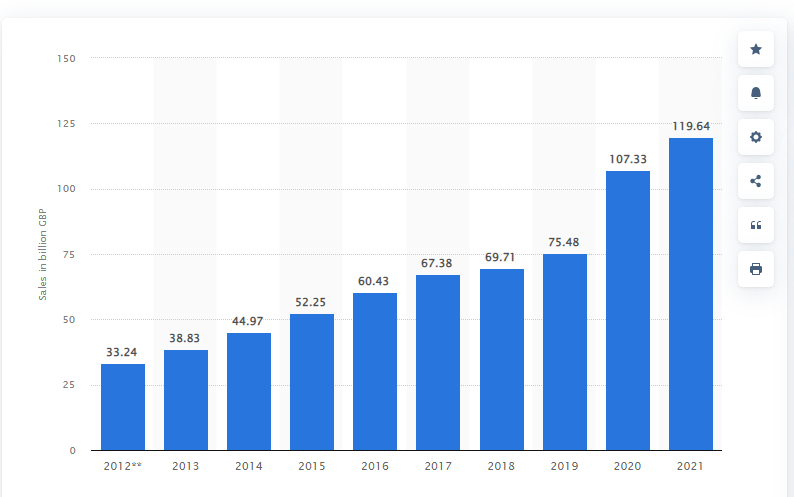
Seeing such a staggering growth of the industry, many new-age entrepreneurs want to enter the market and take a piece of the pie for themselves.
However, sustaining an online business in this stiff competition is not going to be a cake walk for them. Unless you offer exceptional products and out-of-the-world experience, gaining initial success is going to be a tough nut to crack.
Still, including and offering certain features can really set you apart and give you an edge over others. Here are some essential eCommerce website features to power up your business:
We have compiled a list of best features new eCommerce website owners must include to cornerstone their success in the industry. So, let’s begin:
Not perhaps, but surely incorporating a user-friendly web design is pivotal when developing a new eCommerce website feature list. As per one research, you only have 50 milliseconds to create an impression on your first time web visitors.
If your design doesn't deliver on the expectations users have, most likely they will abandon your eCommerce site, never to come back. But how can you avert such a scenario?
Well, the first thing you can do is hire the best eCommerce development services provider team to take your eCommerce web design a notch-higher.
Next is to follow all the eCommerce website design tips and trends that help you improve user-friendliness of your eCommerce site. Doing so will set you on the course to eCommerce success.
After you have sorted out the design part, the next key feature that should be on your must-have list is website navigation. It’s a key element in users’ journey from product discovery to conversion.
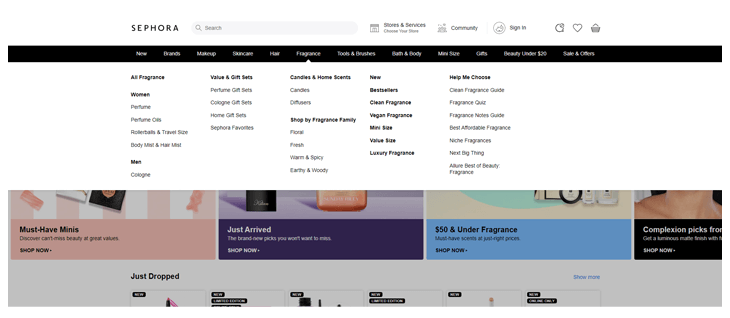
If your users can’t seem to find what they are looking for in an effortless manner, then they find someone else who can. Implement a simple yet clever navigation that allows users to find anything within three clicks.
Your eCommerce products should be categorised in a logical way. Having such a feature can drastically improve the product sales and revenue from your eCommerce site.
Advanced site search functionality kind of supplements to your cleven navigation feature. You may have seen most of the eCommerce sites offering site search functionality.
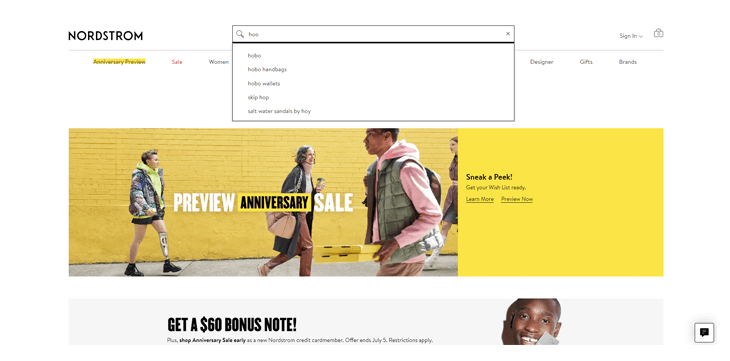
However, most websites only offer simple search, which can frustrate users as it does not help them find the desired product easily. Advanced search functionality ensures that users get to bypass navigation and find exactly what they need.
Advanced site search is not only part of your navigation but also helps boost organic sessions on your site, ultimately improving SEO and conversions. Thus, it’s a must-have feature for a successful eCommerce website.
In addition to making your website easily navigable from the header, you must also pay heed to your footer navigation. Proper utilisation of the bottom of your website can truly bring a change for user engagement and product discovery.
Wondering how you can do so? Here’s an example from T-Mobile:
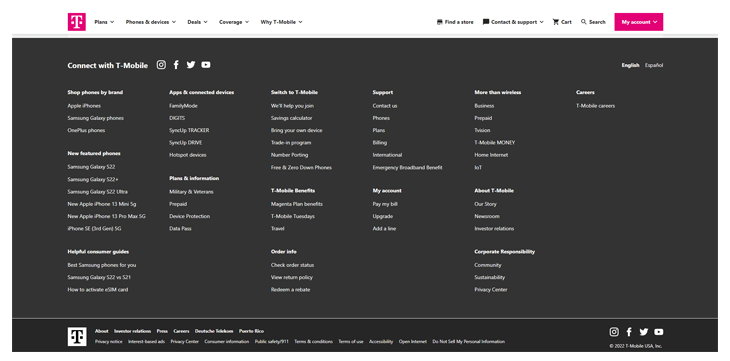
You can clearly see that the footer includes top products categorised into different groups. Such a type of navigation makes finding the desired product for users easy and helps improve their website experience too.
Also, Google gives links added in the footer similar weightage as of the links added in header and within content. Thus, adding links to your footer bolsters your internal linking and boosting SEO score.
Contact us to get a free quote from UK's leading eCommerce Webisite Development Agency.
Click to connect nowSure images are great but videos are greatest! Videos come in handy to highlight product features and benefits, and show it in action. Short yet insightful videos can help users move from the consideration phase to decision quickly.
A HubSpot article stats that product videos are the #1 content type marketers use and 73% of visitors make a purchase after watching them. So, it makes sense to add product videos to your product pages for increased conversions.
However, producing quality videos is not exactly going to be a cakewalk for you. If you can spare a good budget on producing top-quality product videos, you’ll surely experience higher returns.
A 2021 study on UK shoppers found that 98% of them consider reviews an essential source when making purchase decisions. They are the top factor with greater impact on UK shoppers’ purchase decisions.
Product reviews form a primary motivation for your eCommerce shoppers to trust your brand. Irrespective of how great value for money your products are, it’d be hard to win customers over, without gaining their trust.
Many eCommerce players have made it a norm to include personalised customer reviews on each of the product pages. So, you must also follow the suit and integrate the review section on each product page.
Incorporating Frequently Asked Questions or FAQ section can help resolve small, minimal queries users may have before making a purchase.
Instead of getting tired from receiving email from users on trivial matters every time, you can list all the common questions and answer them on product pages itself. Doing so can drastically reduce pre-sales queries and increase conversions.
In addition to the FAQs about your products, also resolve general queries users may have. Here, you can answer customer doubts such as shipping, payments, returns and many others to take their experience a level above.
As per one report, the average cart abandonment rate is over 70% and one of the top reasons for the same is the long and complicated checkout process.
A seamless checkout is where your customers can quickly sign up or login, fill in the necessary info, make payments, and be done with it.
Stretching your checkout process unnecessarily would adversely affect your conversions and increase cart abandonment.
Further, what else you can do to simplify your checkout process is allowing customers to checkout as guests. This will minimise the burden of signing up for new users who want to make the purchase.
Among others, not getting enough payment options is one of the reasons people abandon carts. Offering multiple payments can help you seal the deal and also reduce your cart abandonment rate.
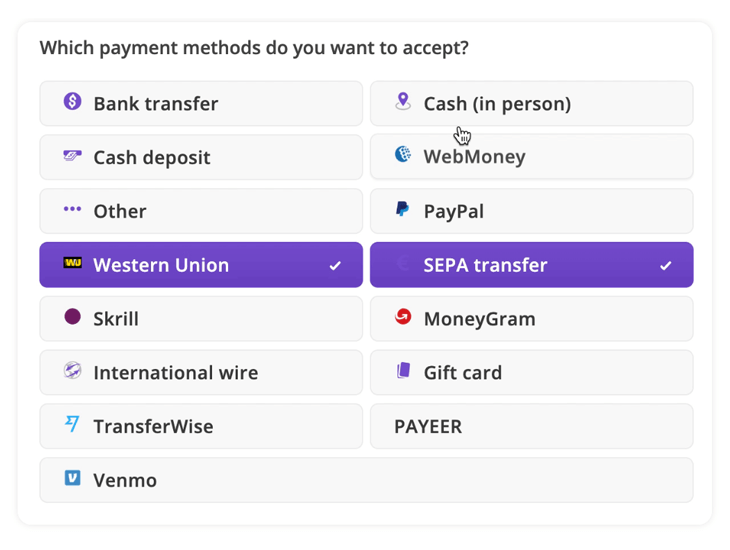
Also Read
Cost to Build a Website in the UKMoreover, offering multiple payments at the checkout also streamlines the purchase process and enhances the shopping experience.
One thing to note here is to only use safe and authentic payment gateways to process payments. Also, showcase the same on your payment page to build trust and get as many conversions as possible.
As per one statistical report, customers on average look up their order tracking 3-5 times per order and 51% expect to get real-time updates for the same.
Including order tracking on your eCommerce website feature list will make it simple for customers to check their order status in real-time.
It’s a vital functionality your eCommerce store needs to enhance user experience during the order fulfilment. Further, it’s not too expensive and keeps your cost to develop eCommerce website in check.
Order tracking is like a boon for eager and anxious customers that need a status report, and sending them a link for the same can ease their stress and improve your likelihood of getting a repeat purchase.
Product returns is a crucial feature for a successful eCommerce website you need to integrate into their site. The benefits of doing so are immense as they help build confidence among users about your products and brand.
As per one survey, 92% consumers said that they will buy again if the website offers effortless product returns.
This statistic clearly demonstrates the power of offering generous product returns. Amazon has made it a norm to offer simple and free returns and you must also follow suit.
It’s taken that free returns can put a dent on your budget, but the likelihood of customers returning for repeat purchases increases significantly.
As per DMA report, email marketing can help generate ROI of £42 per £1 spent. This goes to show the potential emails have for generating revenue for your eCommerce website.
Even if users abandon carts and leave your website, you can still bring the lost sales by sending a personalised email newsletter. Further, emails enable you to reach out to customers for upsell/cross-sell opportunities.
Such types of promotions when done right, can surely lead to higher conversion and revenue generation for your eCommerce website
Has it ever happened to you? While browsing online, you may come across a perfect product and instantly want to make a purchase. However, the product is so in demand and is out of stock most of the time.
The same thing can happen with your customers as well. But what you can do here is offer customers an option to register to get in-stock notifications.
So, when a popular and in-demand product goes out of stock, customers can easily register for it and get notification when it's back in stock.
This will not only enhance the experience of users but also help you capture new customer emails, which you can later use to target upsell/cross-sell other products.
A report on Chatbots found that 67% of consumers worldwide interacted with chatbots to get support as its #1 use case is to get quick answers in emergency.
Chatbots are programmed to mimic human-like conversations in text or spoken using technologies like AI, NLP, and others.
The primary reason for integrating such a system is to reduce the time of customer interaction and offer answers to their queries as quickly as possible.
Since they’ll be available 24/7, it effectively reduces the operational cost of your eCommerce. Also, not to mention the revenue it can bring by resolving simple doubts users may have before purchasing.
While startups and new-age eCommerce entrepreneurs want to show the world that they are tech-agnostic and use innovative technologies, it often does not require reinventing the wheel.
Integrating simple yet customer-centric tools and features for a successful eCommerce website should be your first priority to offer an amazing shopping experience. And the above list makes it perfect for you to start your journey to develop an astonishing eCommerce store.
While you embark on this journey, you’ll often need an expert team of eCommerce developers like Intelivita. We have a rich industry experience and professional record of helping a wide variety of eCommerce startups and enterprises.
Contact us to consult our eCommerce experts for all your online shop development needs.
Get in touch with us